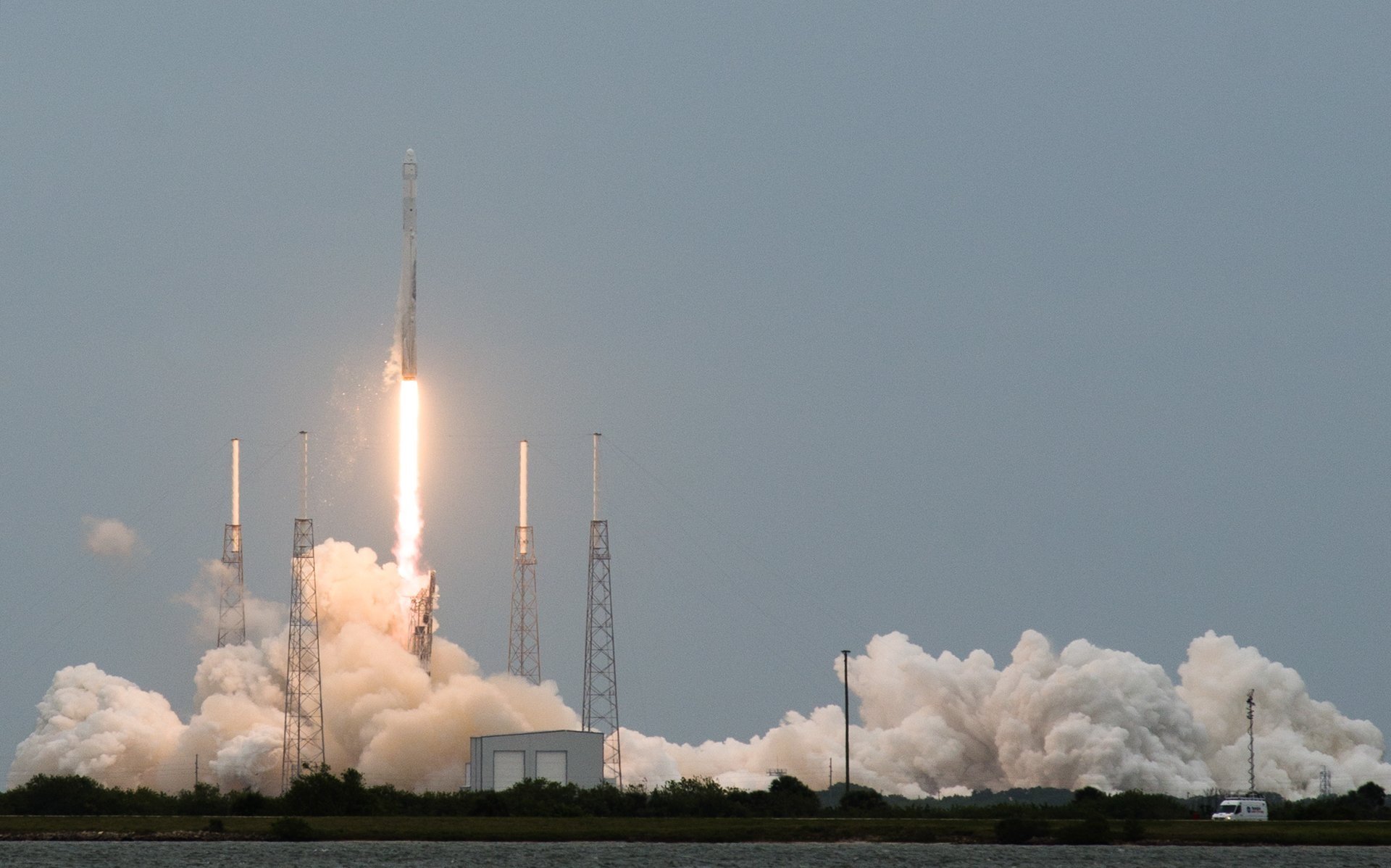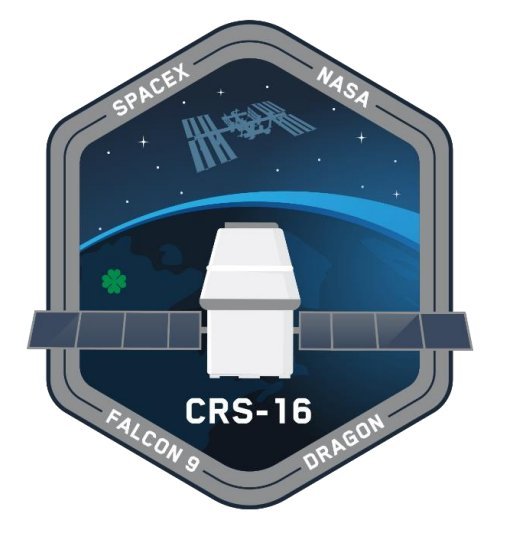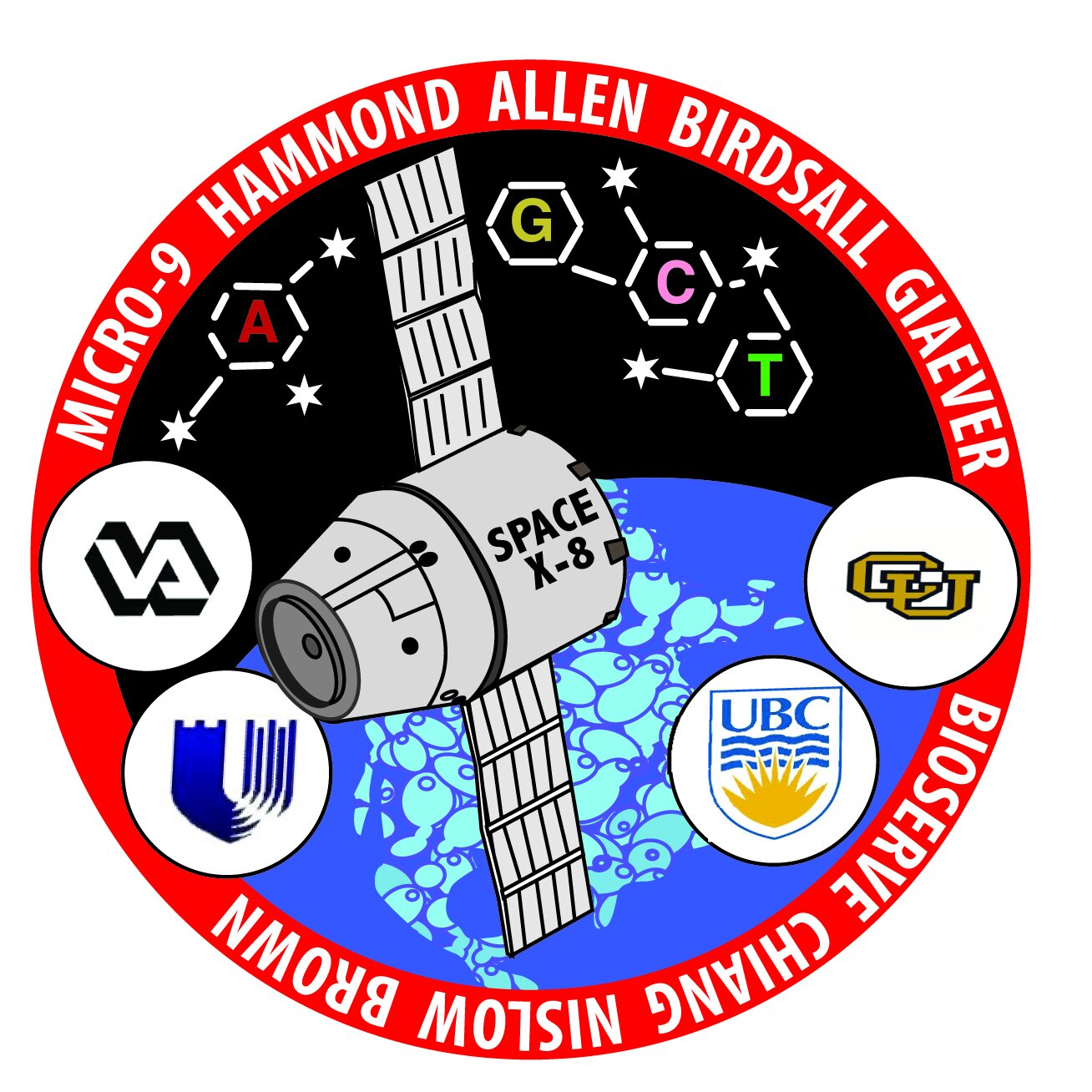Flight Projects Implemented onboard the International Space Station
Dream it.
To date, we have overseen over 35 spaceflight projects. In particular, we have managed the design, development, and execution of 18 investigations successfully operated onboard the International Space Station (ISS) mostly through my tenure at NASA ARC and now with Space Research Within Reach. These studies encompass all disciplines within the Human Research and Space Biology Programs with emphasis on biomedical studies to assess the risk related to long exposure to space environment, radiation, microgravity, stress, and confinement, and develop suitable countermeasures. These investigations were based on a broad scope of biological samples ranging from astronauts to model organisms, e.g., microbes and cells, to better understand their responses to spaceflight environments. Ultimately, these research studies seek to mitigate risks associated with human explorations of the solar system.
Image: SpaceX-3 Launch to the ISS (Taken from NASA KSC, T. Lu).

Three-dimensional Microbial Mapping (3DMM) Mission Patch.
Three-dimensional Microbial Mapping (3DMM) of the ISS Environment - Dr. Kasthuri Venkateswaran (NASA JPL)
This project seeks to analyze swab samples from 1,000 locations within the space station to explore the spatial relationship between bacteria and their metabolites (chemicals produced by their growth). The project will translate molecular information in high-spatial 3D resolution to understand the distribution of microbes and metabolites associated with the built environment of the ISS, a nearly closed ecosystem.
Study: 2019-Present
Microbial Tracking-2 (MT-2) Mission Patch.
ISS Microbial Observatory of Pathogens (MT-2) - Dr. Crystal Jaing (LLNL)
International Space Station – Microbial Observatory of Pathogenic Virus, Bacteria, and Fungi (ISS-MOP) project measured microbial contaminants associated with various ISS modules using traditional culture-based methods and state-of-the-art molecular techniques. The objectives of the ISS-MOP project are to detect viral, bacterial, and fungal pathogens and establish possible correlations with crewmembers.
Study: 2016-2021
Commercial Resupply Service 16 (CRS-16) Mission to the ISS.
Bioscience-04 - Dr. Aracelli Espinosa (UCLA)
Understanding the changes occurring in the central nervous system (CNS) while adapting to weightlessness is of vital importance for human space conquest. It is hypothesized that microgravity induces the proliferation of neural stem cells (NSCs) and oligodendrocytes (OLs) in the brain and spinal cord of astronauts contributing at least in part to such hypertension. The energetic state of the live cells and the secretome of both live and fixed cells will be determined upon return to Earth.
Study: 2016-2021
Space Food Systems Laboratory Patch (NASA JSC).
Food Physiology (Co-managed by ROI) - Dr. Grace Douglas (NASA JSC)
NASA’s Food Physiology experiment will compare the astronauts’ current diet with an “enhanced” spaceflight diet. This will have even more fruits and vegetables and foods rich in bioactive compounds – things like omega-3 fatty acids and lycopene, an antioxidant found in tomatoes. This project will be one of the most comprehensive and interdisciplinary studies of human diet, immune system function, and the gut microbiome ever completed – in microgravity or on Earth.
Study: 2018-2019
Commercial Resupply Service 18 (CRS-18) Mission to the ISS.
Micro-15 - Prof. Bruce Hammer (Univ. of Minnesota)
This experiment investigated the effect of gravity on fundamental properties of mammalian stem cells during differentiation of 3-D cultures of induced pluripotent stem cells (iPSC). This study will investigate how exposure to the space environment fundamentally alters the regulation Oct4, a transcription factor necessary to maintain pluripotency, and how its regulation affects the timing, progression, and outcomes of cell differentiation.
Study: 2017- 2019
Multi-use Variable-g Platform Cell 2 (MVP-Cell-02) Mission Patch
MVP-Cell-02 - Dr. Richard (Craig) Everroad (NASA ARC)
The proposed research aims to understand the effects of the space environment on evolutionary processes in the bacterium Bacillus subtilis. Different mutant lines are raced along solid surfaces to allow continuous selection in the cultures and to maximize the number of generations possible. Imaging captured adaptive changes in fitness, as a growth rate. Deep sequencing of winners will identify evolutionary rates, mechanisms, and targets of selection.
Study: 2016- 2019
Micro-12 Mission Patch.
Micro-12 - Dr. John Hogan (NASA ARC)
The primary objective of this study was to gain a fundamental understanding of the physiology of an exoelectrogenic microorganism, Shewanella oneidensis, which is capable of respiring on solid electron acceptors such as metal oxides during spaceflight. These specialized organisms are used in bio-electrochemical systems, which have the potential to conduct life support processes such as wastewater treatment as well as yield a wide array of space-relevant products such as biofuels, food products, and therapeutics.
Study: 2015-2019
Micro-11 Mission Patch.
Micro-11 - Prof. Joseph Tash (KUMC)
Little is currently known about the biology of reproduction in space, and this experiment will begin to address that gap by measuring, for the first time, how well bull and human sperm function in space. The study investigated sperm motility and activation in microgravity and compared the visual observation with morphological, molecular, and metabolomics data. The project will expand prior successful flight studies and translate the applied methodologies to mammalian studies.
Study: 2014-2019
Microbial Observatory/Microbial Tracking-1 (MT-1) Mission Patch.
Microbial Observatory (MT-1) - Dr. Kasthuri Venkateswaran (NASA JPL)
This was the first of a kind study that combined culture and molecular-based methods to understand the diversity of the microbial flora on the surface or in the air onboard the ISS over a one-year period. Sampling microbes multiple times enables scientists to understand the diversity of microbes on the station and how the microbial population varies over time. The study led to a breakthrough in our ability to spot microbial contaminants that may damage equipment or potentially threaten astronaut’s health.
Study: 2014-2018
Micro-10 Mission Patch.
Micro-10 - Prof. Clay Wang (USC)
The study investigated the effects of spaceflight on the growth, gene expression, and physiological responses of Aspergillus nidulans, a fungal model organism. Aspergillus and other fungi have the ability to make a variety of complex, bioactive molecules. The experiment focused on how microgravity affects the production of fungal molecules known as secondary metabolites. These compounds could have unique properties that could benefit human health.
Study: 2015-2018
Micro-9 Mission Patch.
Micro-9 - Dr. Timothy Hammond (VAMC)
The aim of the study was to assess how changes in yeast are induced by microgravity through changes in density-driven ammonia convection and the subsequent effects on Msn4- and Sfp1-dependent genetic and cellular differentiation of giant yeast colonies. This work will provide a better understanding of yeast adaptation response to extreme environments and the associated crew health risks for long-term exploration.
Study: 2014-2018
Commercial Resupply Service 4 (CRS-4) Mission to the ISS.
Micro-8 - Prof. Sheila Nielsen (MSU)
The study would further examine how spaceflight affects potentially infectious organisms. Specifically, the investigation will assess gene expression, morphology, and virulence responses of a yeast strain, Candida albicans (C. albicans), following exposure to spaceflight. C. albicans is an opportunistic human pathogen that usually does not cause disease in healthy individuals but can cause infections under certain circumstances, such as when an individual has weakened immunity.
Study: 2014-2017
Micro-7 - Dr. Honglu Wu (NASA JSC)
In this experiment, cultured human fibroblast cells were flown and cultured onboard the International Space Station (ISS) to investigate changes in miRNA and RNA expression profiles using high-throughput molecular biology techniques. Additionally, an assessment of the impact of microgravity on DNA repair was tested during the study. Studying how spaceflight affects non-dividing fibroblast cell cultures will help reveal the root causes of spaceflight-induced changes to living tissues, organs, and whole body systems.
Study: 2013-2016












